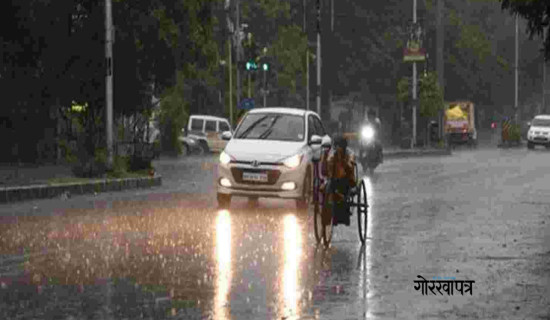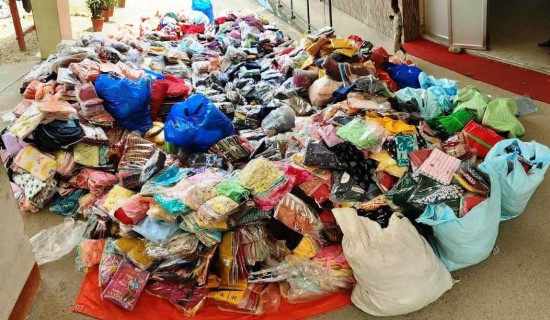- Saturday, 23 August 2025
'Tusa' trade booms, but commercial cultivation still unattainable
Navinraj Kuikel,Lamjung, 28 July: The trade of Tusa, a local name for the tender shoots of bamboo found in the forest—has been booming from villages to cities. Tusa, which is considered as seasonal vegetable, has seen increasing demand in district headquarters Besisahar and other nearby markets.
Tusa, an edible shoot, is technically a part of the (Nigalo), a kind of dwarf bamboo because of which collecting and selling Tusa is legally restricted. Despite this, the Annapurna Conservation Area Project (ACAP) and local community forests occasionally conduct crackdowns, citing illegal harvesting and sale of forest products.
Still, the business of this delicacy continues to rise each day. Not only in urban centres like Besisahar, Sundarbazar, Bhoteodhar, Khudi, and Bhulbhule, but even in rural areas, its trade is thriving. Some locals and visitors from Lamjung even send Tusa abroad as a gift.
While officials from ACAP, the Forest Office, and community forests call the practice illegal, Tusa is still openly harvested and sold—even to forest, ACAP, and local security officials themselves. Wholesale trade happens in Besisahar, with more than 10 sacks of Tusa being sold in a single day, according to local wholesalers. One mana (traditional measuring unit) of Tusa sells for anywhere between NRs 60 to 100.
Uncontrolled harvesting of Tusa threatens the sustainability of this plant. According to Pramod Regmi, head of the ACAP sub-office in Bhulbhule, excessive cutting harms the natural ecosystem. Nigalo, from which Tusa comes, is essential for the survival of certain species like the red panda, five types of deer, and the Himalayan black bear—all of which rely heavily on bamboo leaves for survival. Moreover, local products like basket, bamboo tray, mat, bamboo hat, and bamboo bin that are traditionally made from Nigalo are also at risk if the bamboo source is depleted. Experts emphasize the need to preserve Nigalo and promote sustainable harvesting.
ACAP has been raising awareness about the negative impact of random cutting and has introduced regulations that require a permit to harvest Tusa. However, enforcement is weak. Neither has the harvesting stopped, nor has the trade slowed down.
Collecting Tusa from high hills and Himalayan forests is not an easy task. According to Bhim Prasad Gurung, a farmer from Bhulbhule, harvesting starts at 3 AM, followed by a three-hour walk through dangerous forest paths with threats from wild animals and steep cliffs. He said, "With no land for farming, collecting Tusa is the only way to support my family."
Farmers from Bhulbhule, Uttarkanya, Simpani, Khudi, and Ghanpokhara in the ACAP area earn NRs 500 to 1,000 daily just from selling Tusa. Regions like Bhulbhule, Usta, Bansar, Ghemre, Bhulbhule, Pasgaun, and Ghanpokhara are rich in this wild resource.
Agricultural technicians believe Tusa could be developed through commercial cultivation. However, no authority has taken initiative in this direction yet. According to Santosh Khanal, Forest Officer of the Division Forest Office Lamjung, cultivating Nigalo in underutilized highland and alpine pastures could bring both income and help conserve biodiversity.
Khanal said, “Cultivating Nigalo isn’t that difficult. Once planted, it doesn’t need much care for 5–6 years. You just need to harvest Tusa each year.”
















